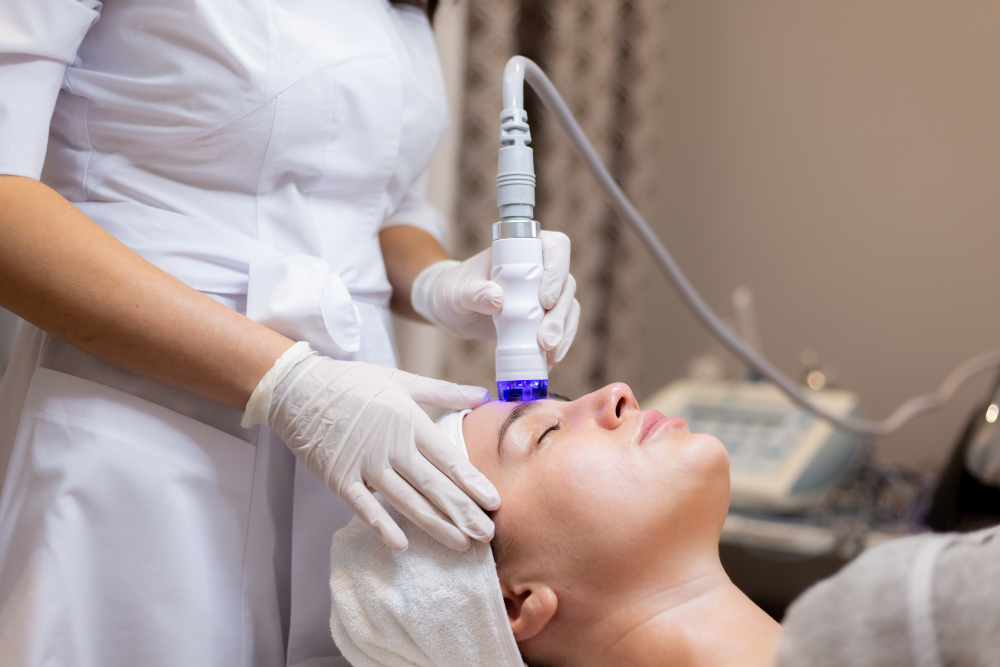Unlocking the Secrets of Laser Hair Removal Treatment: Efficacy and Safety Considerations

Tired of waxing and plucking out errant hair on the face and body? Wouldn’t it be great if there was an easier solution? Well, there is! Laser hair removal treatment has become a popular choice for those seeking a more permanent solution to unwanted hair. Here, we give you an overview of the procedure and considerations.
The Procedure
Laser hair removal treatment targets the pigment in the hair follicles with concentrated light energy. This energy is absorbed by the pigment, which then damages the follicle, inhibiting future hair growth.
How Effective Is the Procedure?
While the laser hair removal procedure is quite effective, it typically requires multiple sessions to achieve significant and long-lasting results. Effectiveness can vary depending on factors such as skin tone, hair color, hair thickness, and the type of laser used.
Most people experience a noticeable reduction in hair growth after just a few sessions, with optimal results usually achieved after 6-8 treatments spaced several weeks apart.
Also Read: Transformative Skin Care Routine
How Safe Is the Treatment?
When performed by a qualified and experienced practitioner, laser hair removal is quite safe. There may be some side effects, like temporary redness, swelling, and discomfort immediately following treatment. These symptoms usually subside within a few hours to a few days.
To ensure safety and minimize risks, it's essential to choose reputed and licensed aesthetic care professionals who have experience in performing laser hair removal.
Factors to Consider
- Skin Sensitivity - It's essential to discuss any skin conditions or concerns with your practitioner before starting the procedure.
- Sun Exposure - Avoid exposure to sun before and after laser hair removal, as it can increase the risk of complications such as changes in pigmentation or burns.
- Hair Color and Thickness - Laser hair removal is most effective on dark, coarse hair. Lighter hair colors such as blonde or gray may be more challenging to treat, as the laser targets the pigment in the hair follicle.
- Medical History - It's important to disclose any medical conditions, medications, or allergies to your practitioner before undergoing laser hair removal.
Laser hair removal treatment can be an effective and safe option for reducing unwanted hair growth when performed by a qualified aesthetic skin care professional.
Frequently Asked Questions
1. How does laser hair removal work?
Laser hair removal uses focused light energy to target the pigment in hair follicles. This light is absorbed by the pigment, damaging the follicle and preventing future hair growth.
2. How many sessions do I need for laser hair removal?
Typically, it takes 6-8 sessions, spaced several weeks apart, for significant and long-lasting results. The exact number can vary based on your skin tone, hair color, and thickness.
3. Is laser hair removal safe?
Yes, it is safe when performed by a qualified professional. However, temporary side effects like redness, swelling, and discomfort can occur, which usually subside within a few hours to a few days.
4. What should I avoid before and after laser hair removal?
Avoid sun exposure before and after treatment to prevent complications like burns or pigmentation changes. Inform your practitioner about any medical conditions, medications, or allergies before starting treatment.
5. Is laser hair removal effective for all hair types?
Laser hair removal is most effective on dark, coarse hair. It can be less effective on lighter hair colors like blonde or gray, as the laser targets the pigment in hair follicles.
- May 07, 2024
